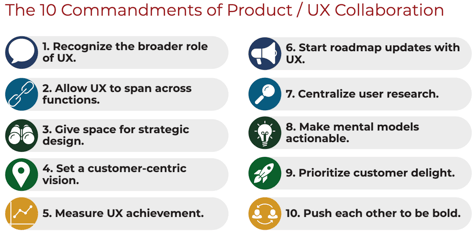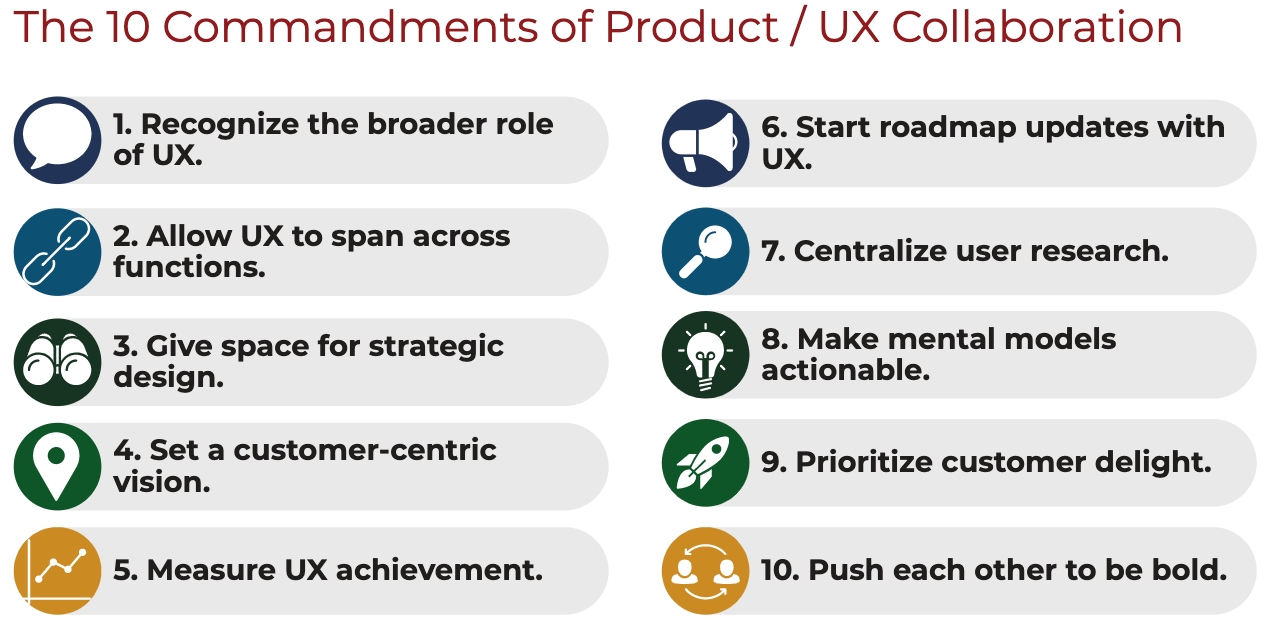Product management is a highly collaborative role. One of the most critical partnerships in the success of any product is the product-design relationship, especially when it comes to the user experience. Last fall, I presented how top product and UX teams work together at a NoVA UX Meetup. Here's a summary of my talk.
The 7 Deadly Sins of Product-UX Non-Collaboration
I started off by outlining all the ways companies get this wrong by using popular movie villains (check out the deck).
- Specifying the entire design. Product can't just hand a design over and ask for feedback - that's not collaborative.
- Prioritizing business objectives over user empathy. Help users solve the problem they care about, and you're much more likely to hit your business goals.
- Requiring an approver. Trust is an important part of any relationship - what does it say when a product manager "rejects" a design?
- Designing as an afterthought. This is never a good situation: "We've decided to build X - just make it look pretty and easy to use."
- Relegating the role of design. Design should be a peer to Product, Marketing, and Engineering, rather than report into any of those functions.
- Continuing the status quo. Give designers an opportunity to think outside of the box - you'll be glad you did.
- Dismissing tough questions. Don't ignore designers when they ask great questions about an initiative - take the time to clarify what you're trying to accomplish and why.
The 10 Commandments of Product-UX Collaboration

Then I explained the best practices for how to get this right:
- Recognize the broader role of UX. The UX team's job is to represent the voice of the customer in all internal discussions.
- Allow UX to span functions. Your customer journey is delivered by many teams (marketing, sales, product, customer success) - design can help them all to create a cohesive experience.
- Give space for strategic design. Design should have time to do the work required to inform the customer journey vision and strategy to realize that vision.
- Set a customer-centric vision. Design should also be involved in communicating the customer journey vision.
- Measure UX achievement. Ask the UX team to choose KPIs like usability and self-assess the adherence to design principles so you can track and prioritize UX efforts.
- Start roadmap updates with UX. A "State of the UXnion" presentation can set the right context for upcoming priorities, as it highlights key insights from user research and opportunities to solve new problems for customers (or optimize the existing UX).
- Centralize user research. Force prioritization of near-term usability testing the design team needs to do against long-term, strategic user research for product.
- Make mental models actionable. Make sure the customer's view of things is front-and-center when important decisions are made.
- Prioritize customer delight. Don't forget to make time for designs that make customers smile or think "oh, that's really nice". (this comes from the Kano model)
- Push each other to be bold. Experiment to change the status quo of how product management and design collaborate (or don't).
The Actual Talk
In case you'd like to see more from the actual Meetup Talk, here are some additional materials:



